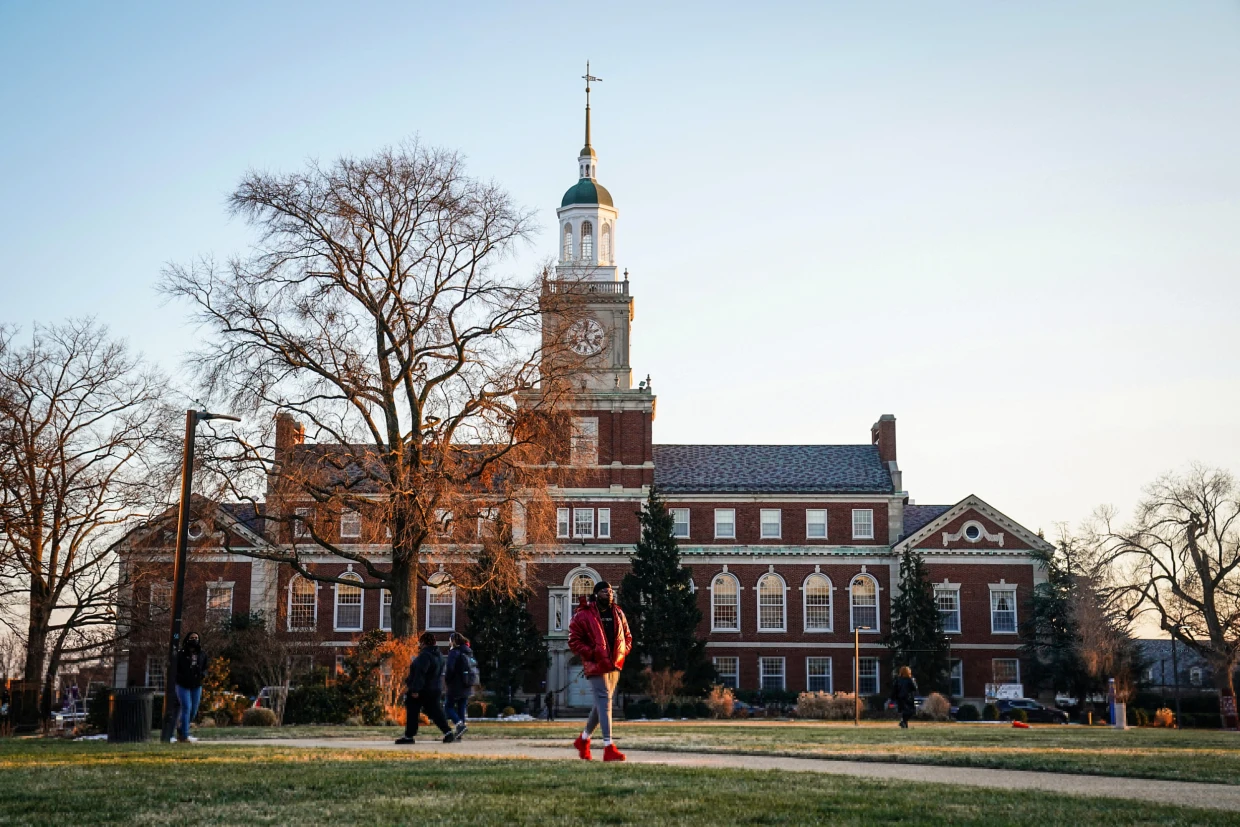By Tat Bellamy-Walker
Experts say the recent bomb threats build on years of racist attempts to stop Black people from getting educations at historically Black colleges and universities.
This week more than a dozen historically Black colleges and universities across the country were again forced to lock down campuses and cancel classes because of bomb threats.
The FBI has identified six “tech-savvy” juveniles as persons of interest in the threats, which appear to be racially motivated, officials said.
That comes as no surprise to experts who spoke with NBC News, who said the threats were acts of intimidation, building on years of attempts to racially terrorize Black Americans through some of the community’s most important institutions.
The threats also come as Black people continue to rise into high-profile positions, including Vice President Kamala Harris, a Black and Indian woman, who became the first graduate of an HBCU to hold the nation’s second-highest political office.
Robert Palmer, a department chair and associate professor of educational leadership and policy studies at Howard University in Washington, D.C., said titles like this affirm the power of Black institutions, making them more vulnerable to racist attacks. Howard is among the colleges that got bomb threats this week.
“There are some people in society who actually are threatened by the power of HBCUs and the transformative education that they provide and how they provide access to spaces that were once shut off or once limited to minoritized communities,” Palmer said. “There definitely seems to be a correlation between the recent attention HBCUs have gotten, particularly with Kamala Harris, and then the fact that HBCUs are equipping students to get access to key places and important places of power in society.”
He continued, “We live in a very polarized racial climate, and many white people see their power slipping away.”
According to school officials and social media posts, in addition to Howard, these college all reported bomb threats: the University of the District of Columbia, also in Washington; Morgan State and Coppin State universities in Baltimore; Fort Valley State University in Fort Valley, Georgia; Kentucky State University in Frankfort; Xavier University of Louisiana in New Orleans; Edward Waters University in Jacksonville, Florida; Alcorn State University in Lorman, Mississippi; Mississippi Valley State University in Itta Bena; Rust College in Holly Springs, Mississippi; Spelman College in Atlanta; Jackson State University in Jackson, Mississippi; and Tougaloo College in Tougaloo, Mississippi.
For decades, historically Black colleges and universities have faced racist threats of violence, said Joy Williamson-Lott, the dean of the University of Washington’s Graduate School in Seattle, who studies the history of Black educational institutions.
“These institutions represented the drive for equal opportunity and a threat to white supremacy in the South,” Williamson-Lott said. “Public Black institutions were deliberately underfunded, controlled exclusively by white trustees, and some were deliberately located in remote parts of their states. White elected officials never intended for them to be successful, only to train Blacks to work in a segregated and hierarchical society.”
Violence linked to neo-Nazis
The most recent bomb threat at Bethune-Cookman University in Florida came from someone claiming to be part of the Atomwaffen Division, a neo-Nazi group, Daytona Beach police said. In a phone call, the caller said bombs containing C4 plastic explosives would be detonated and a gunman would open fire on the campus around lunchtime the same day, Police Chief Jakari Young said, The Associated Press reported.
It is not the first time experts suspected a white supremacist group of targeting a Black educational institution. Wilberforce University in Greene County, Ohio, one of the country’s oldest private historically Black colleges, faced an arson attack after the assassination of President Abraham Lincoln in April 1865. The fire destroyed some of the buildings at the university, totalling $50,000 in damage, The New York Times reported. Although experts surmise that the fire was started by a white supremacist group, the culprits remain unknown.
In the 1920s, hundreds of Black college students began rallying for racial equality to improve education and address other poor conditions on Black campuses. HBCU students went on strike after officials denied requests to allow them to start NAACP chapters, and they boycotted school leaders who supported segregation policies.
The rise of similar racial justice movements, like Black Lives Matter, also represented a threat to white supremacy, she said.
“Phoning in a bomb threat to a Black college is a way to remind Black people to ‘stay in their place,’ to not get ‘uppity,’” she said. “It’s the same type of intimidation that was used in the past. Whether the threat is imagined or real, it is still violent.”
She added: “There’s a pattern: Whenever Black people and their allies begin to make more urgent demands and even progress, there is intense white pushback.”
Crystal R. Sanders, an associate professor of history at Pennsylvania State University, said the threats were acts of racial intimidation.
“I believe that these Black colleges are being targeted because they are tangible sites of Black resilience, of Black resistance, tangible sites of Black intellect,” Sanders said. “I don’t believe it’s a coincidence that whoever these perpetrators are have decided to go after these educational institutions.”
Sanders said Black institutions will remain a testament to the importance of centering Black education after the threats.
“These perpetrators are attempting to send a message by disrupting Black colleges,” Sanders said. “But that message will be returned to sender in the sense that these Black schools will continue to do what they do, which is to promote Black excellence.”

